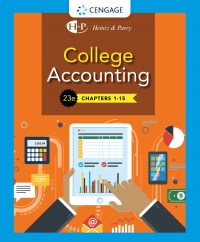Question
Judge the solvency of the two companies and analyze which of the two companies is the best performer (i.e. has the highest solvency)? For balance
Judge the solvency of the two companies and analyze which of the two companies is the best performer (i.e. has the highest solvency)? For balance sheet items, use end-of-year numbers.
All positions on the financial statements of Nestl are in millions of CHF. All positions on the financial statements of Unilever are in millions of .
The financial statements of Nestl S.A. 2019 (132 pages) can be found here: https://www.nestle.com/sites/default/files/2020-02/2019-financial-statements-en.pdf
The annual report of Unilever Group 2019 (183 pages) can be found here: https://www.unilever.com/Images/unilever-annual-report-and-accounts-2019_tcm244-547893_en.pdf


Net profit margin II Gross operating margin 11 Net operating margin Retum on equity (ROE) = Retum on assets (ROA) = Net profit after tax Sales Sales less cost of sales Sales Net profit before interest and tax Sales Net profit after tax (average) Equity Net profit before interest (average) Total assets Net profit after tax + (interest *(1- tax rate) (average) Total assets Net profit before interest on LT- debt (average) Equity + LT-debt Net profit after tax Number of shares outstanding 11 Retum on capital employed (ROCE) II Earings per share (EPS) Total asset turnover Sales (average) Total assets Long-term asset turnover Sales (average) Non-current assets Inventory turnover II Cost of sales (average) Inventories Receivables turnover 11 (Net credit) Sales (average) Receivables Gearing (Debt/equity ratio) Debt Equity This ratio is also frequently computed on the basis of debt to total finance: Gearing (Total finance) 11 Debt Debt + Equity Interest cover II Profit before interest and tax Net interest charges Earnings per share Dividend per share Dividend cover II Current ratio Il Current assets Current liabilities Current assets - Inventories Current liabilities Acid test (or quick ratio) Days inventory outstanding II (average) Inventories Cost of sales 365 days Similarly: Credit given 365 days (average) Receivables (Credit) Sales (average) Trade payables Cost of sales Credit obtained * 365 days II redit obtained Net profit margin II Gross operating margin 11 Net operating margin Retum on equity (ROE) = Retum on assets (ROA) = Net profit after tax Sales Sales less cost of sales Sales Net profit before interest and tax Sales Net profit after tax (average) Equity Net profit before interest (average) Total assets Net profit after tax + (interest *(1- tax rate) (average) Total assets Net profit before interest on LT- debt (average) Equity + LT-debt Net profit after tax Number of shares outstanding 11 Retum on capital employed (ROCE) II Earings per share (EPS) Total asset turnover Sales (average) Total assets Long-term asset turnover Sales (average) Non-current assets Inventory turnover II Cost of sales (average) Inventories Receivables turnover 11 (Net credit) Sales (average) Receivables Gearing (Debt/equity ratio) Debt Equity This ratio is also frequently computed on the basis of debt to total finance: Gearing (Total finance) 11 Debt Debt + Equity Interest cover II Profit before interest and tax Net interest charges Earnings per share Dividend per share Dividend cover II Current ratio Il Current assets Current liabilities Current assets - Inventories Current liabilities Acid test (or quick ratio) Days inventory outstanding II (average) Inventories Cost of sales 365 days Similarly: Credit given 365 days (average) Receivables (Credit) Sales (average) Trade payables Cost of sales Credit obtained * 365 days II redit obtained
Step by Step Solution
There are 3 Steps involved in it
Step: 1

Get Instant Access to Expert-Tailored Solutions
See step-by-step solutions with expert insights and AI powered tools for academic success
Step: 2

Step: 3

Ace Your Homework with AI
Get the answers you need in no time with our AI-driven, step-by-step assistance
Get Started


